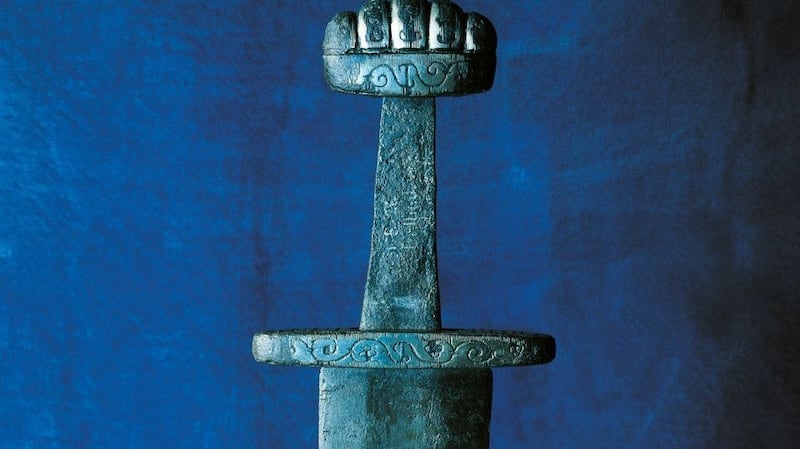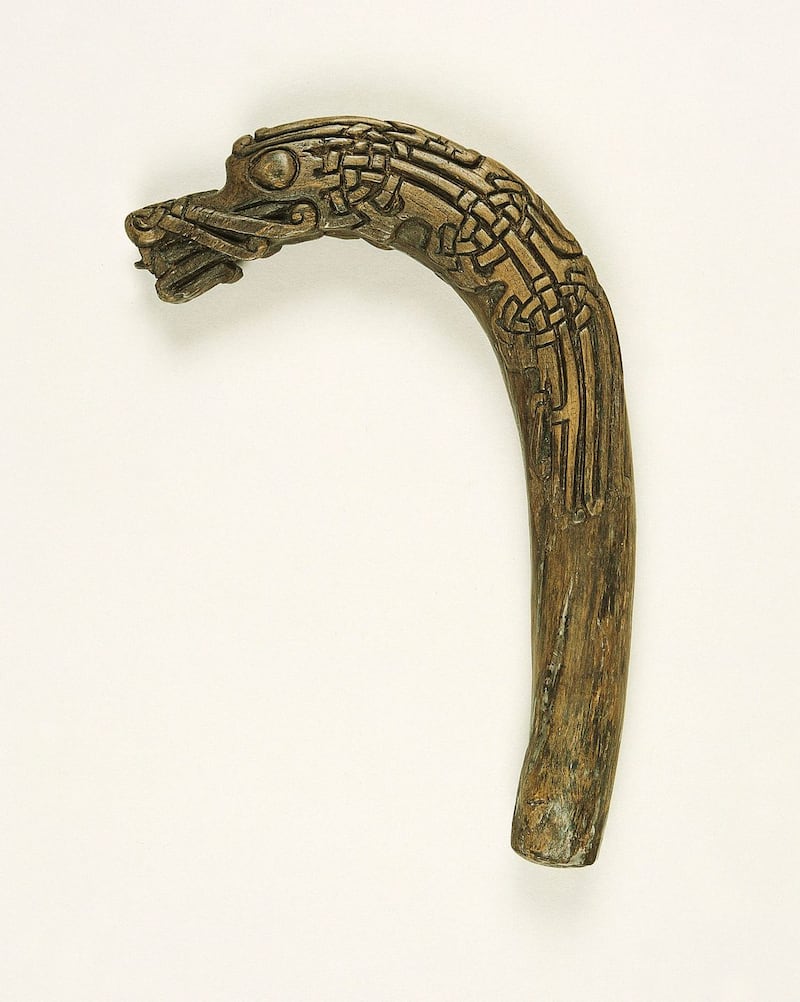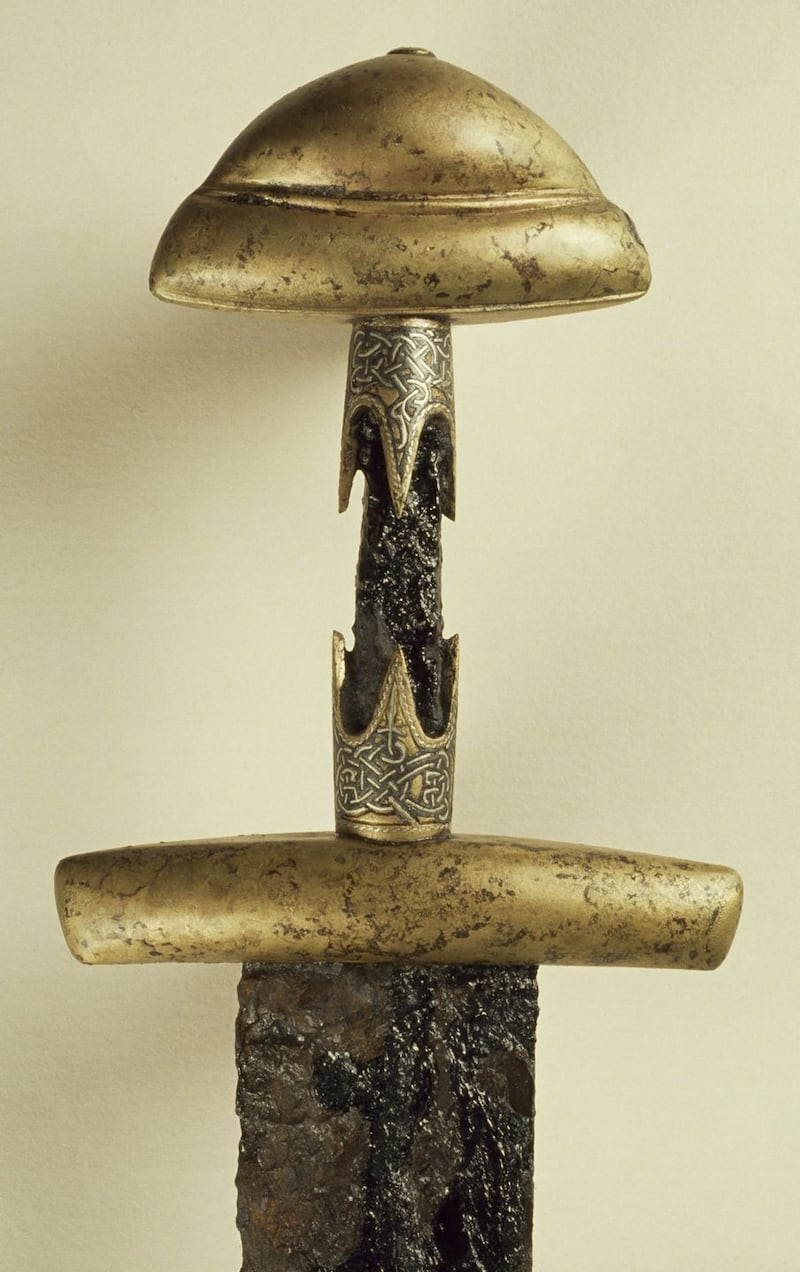Some 1,300 years after Viking invaders from Scandinavia set foot in Ireland, DNA technology has enabled scientists to determine their genetic make-up.
They changed the course of Irish history and left a lasting legacy on the island’s gene pool, but blonde hair and blue eyes were often not their dominant distinguishing characteristics, a major international study has found – prompting the suggestion that some TV shows may have to rethink their casting calls.
The findings of the largest ever DNA analysis of Vikings, who travelled by sea to raid and eventually settle on the island of Ireland, show they derived much of their genetic ancestry from Norway.

Moreover, many Vikings had brown hair and darker features including the famous Eyrephort warrior from Co Galway, while English Vikings display sharp ancestral differences to their Irish counterparts, with much stronger Danish influences. Some thought to be Vikings and given a ceremonial burial turned out to be locals.
Researchers from the National Museum of Ireland and Trinity College Dublin (TCD) made a significant contribution to the six-year project led by Prof Eske Willerslev, a University of Cambridge fellow and director of the University of Copenhagen GeoGenetics Centre.
The results published in Nature debunk the modern image of the typical Viking both within Scandinavia and across Europe.
Viking raids in Ireland were first recorded during the late eighth century – the first in Europe. The first physical evidence were graves containing personal possessions, such as swords, spearheads, shields and ornate jewellery.

Their presence made a lasting impact on Irish life. The origins of urbanism in Ireland can be traced to this time, as well as the influx of silver into the economy. "You can see many elements of Scandinavian art styles in Irish artefacts from the Viking Age," said Maeve Sikora, keeper of Irish antiquities at the National Museum.
"Up until now this wonderful mixing of culture and ideas has been reflected most clearly in decorated iconic pieces that survive from the centuries that followed the initial invasions, such as the Cross of Cong. The new DNA research on the human remains adds another rich layer of context to this interaction," she said.
The genomes of three men and a woman from Irish Viking burials in Dublin and Co Galway were sequenced. This includes sites at Islandbridge, close to the largest early Viking Age burial complex in Dublin; Finglas (a female burial excavated in 2004); a male burial from Ship Street Great in Dublin; and Eyrephort discovered near Clifden in Co Galway in 1947.
"It has long been suspected that many of these invaders came from Norway. It is fantastic to be able to confirm this now with genetic data," said Dr Lara Cassidy of TCD.
“New technologies have given us an unprecedented window into the world of Irish Vikings – how they looked and where they came from,” she added. “We are only beginning to untangle the diverse ancestral and cultural identities present in Early Medieval Ireland. The next exciting step will be to sequence local populations from the same period.”

Dublin became one of the most important towns in the Viking world, where the earliest physical evidence for Vikings derives from these furnished burials which were always assumed to be Viking raiders of Scandinavian origin.
The “local” at Ship Street Great was also predicted to have pale skin and blonde hair, with possible red undertones. In contrast, the famous Eyrephort warrior, who is of majority Norwegian-like ancestry, most probably had a darker complexion with brown hair and eyes.
"It's the reverse of what you would expect from the media's portrayal of Vikings," said Linzi Simpson, excavator of the Ship Street Great site. "In fact many of the Viking burials sampled from across Europe had brown hair. Some TV shows may have to rethink their casting calls."
Projects such as this underpin the importance of caring for archaeological material, which allows future generations of researchers to uncover ever more of our shared heritage, Dr Cassidy underlined. “Archaeologists and museum curators working in 1947 would never have imagined that we might know the hair and eye colour of the warrior who was buried with his weapons near Clifden, Co Galway, in the ninth century.”

‘No single Viking identity’
The scale of the project is indicated by the team sequencing 400 samples from all across Europe, she noted. The results confirmed a lot of what was suspected; what was most surprising was the diversity – in hair, eyes and skin pigmentation.
"Scandinavia was clearly a dynamic place during the Viking Age," said lead author Dr Ashot Margaryan of the University of Copenhagen. "We see regional genetic differences between Norway, Sweden and Denmark, as well as influence from southern Europe and Asia. There was never a single unified 'Viking world' and now we see that there is no single Viking genetic identity either."
The Finglas woman died in and around her 30s and was buried with a pair of richly decorated gold and silver oval brooches and a decorated comb. Her sequence genome suggests she conformed more with what you might expect of the stereotypical Viking woman – blonde with blue eyes.

The study also revealed Viking identities were taken up by local people in Ireland and Britain. The Viking burial at Ship Street Great in Dublin showed very little Scandinavian ancestry and belonged to a male lineage most common in northwest Ireland.
“Viking graves in Ireland speak of a population that was keenly aware of their surroundings and the wider cultural sphere in which they lived. We see at Finglas, for example, an apparently non-Christian Viking burial placed beside a local Christian cemetery. We also see that many furnished graves contain locally manufactured artefacts,” Ms Sikora added.










